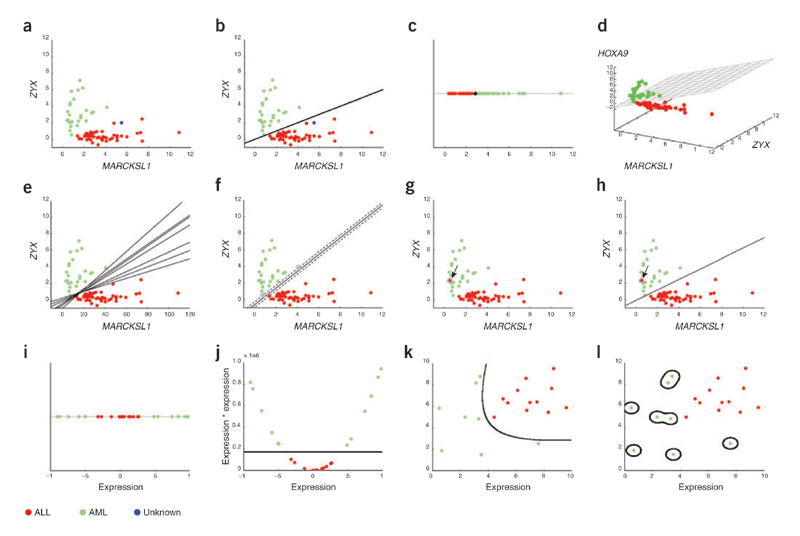The goal of an SVM is to separate a n-dimensional feature space with a single hyperplane. The hyperplane allows the SVM algorithm to make a prediction on an input based its coordinates. The SVM can be best used by classifying groups of similarly related data.
This library leverages the power of the SVM algorithm while only using Numpy as a dependency. Numpy is a python math library that contains functions to assist with scientific computing.
Below is the dual form of the SVM. This library is able to tackle this problem efficiently by utilizing the SMO algorithm.
Below are examples of data seperated by a hyperlane utilizing linear and non-linear transformations

In order to start classifying your own data with the SVM you must first install Numpy
pip3 install numpy
After installing Numpy youre ready to start using the SVM library. Below is an example classifier which is able to determine if an input sample is likely to have parkinsons disease from pitch differeances in audio samples.
from SVM import *
X = []
y = []
# open parkinsons dataset text file. This file contains training data
file = open('datasets/parkinson\'s disease/dataset.txt')
for line in file.readlines():
lineArr = line.strip().split(',')
xx = []
for i, datapoint in enumerate(lineArr):
if i > 0 and i != 17: xx.append(float(datapoint))
if i == 17: y.append(datapoint)
X.append(xx)
# init svm with radial basis function kernal
svm = RBFSVM(x=X, y=y, C=2, tol=0.000001, max_Passes = 500, min_Alpha=0.00001, gamma=0.001, checkAccuracy=True, OVR=False)
# train classifier
svm.fit()
# allow user to input samples into trained svm algorithm.
# the algorithm will then output a confidence score and predictions
while True:
vector = input('Input a sample\n')
sample = [float(x) for x in vector.split(',')];
predictSample = svm.predict([sample]);
print("{0}. confidence {1}%".format(predictSample[0],predictSample[1]));
